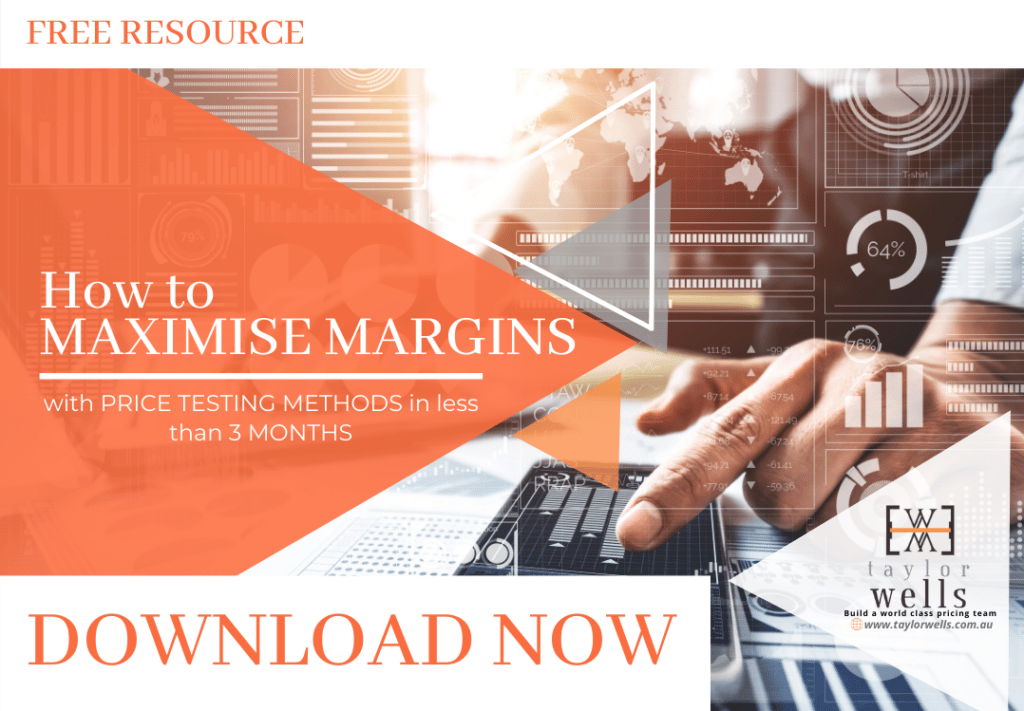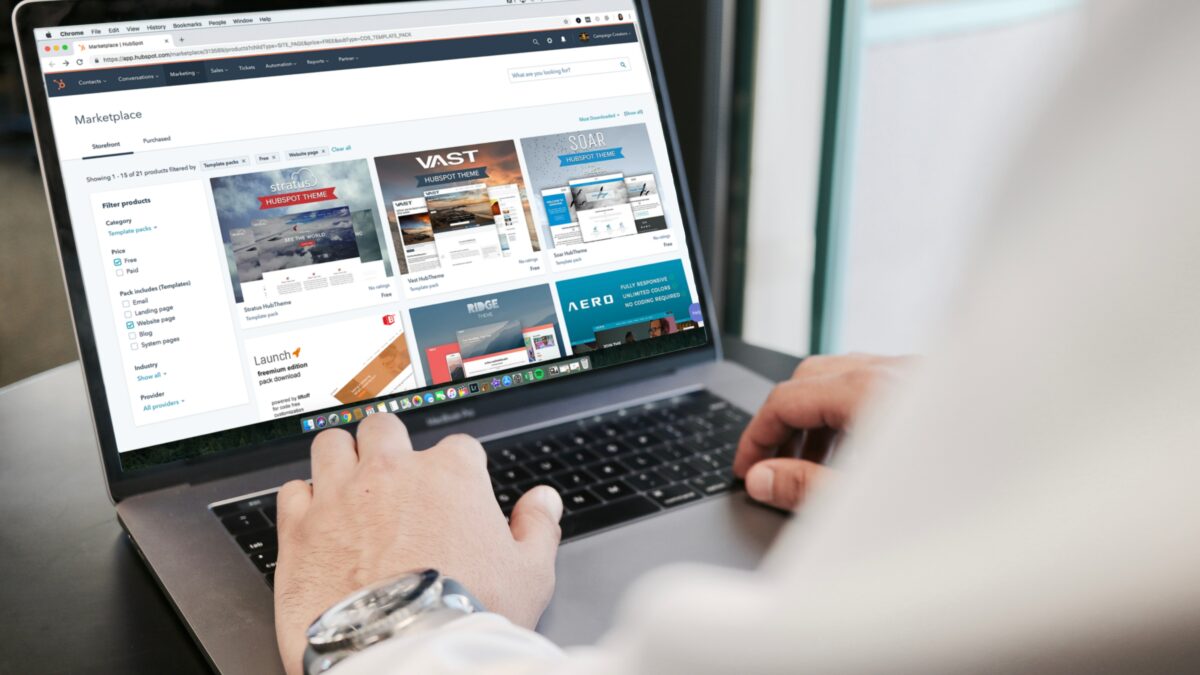
The Ultimate Guide to Maximising the Benefits of Dynamic Revenue Pricing Strategy 🌈
Dynamic pricing is among the most captivating concepts that have swept the eCommerce sector. Although companies are not wholly new to the tactic, the popularity of this pricing strategy is strongly linked to new eCommerce developments. Customer behaviours are changing. More and more people are choosing to shop online. And businesses would be well to invest in developing their dynamic pricing capabilities to get the greatest benefits. Or else, they risk falling behind their competitors. How are you going to do it?
>Download Now: Free PDF How to Maximise Margins
We are well aware that, as with any pricing strategy, there is no single path to success when it comes to dynamic pricing. Even with the strategic advantage that dynamic pricing can deliver, few companies have begun to utilise it. Some firms are only now commencing their research on the potential of dynamic pricing. While other businesses are undecided. They conducted weak and poorly thought-out experiments that, unsurprisingly, had almost no significant impact and thus failed to win the board’s confidence. What should they do instead?
In this article, we present guidelines and examples for maximising the benefits of a dynamic revenue pricing strategy. First, we define dynamic pricing and explain it. Then, we show the advantages that businesses can gain by designing and implementing this pricing structure. Finally, we discuss the best ways to harness dynamic pricing efficiently.
At Taylor Wells, we believe that a dynamic revenue pricing strategy does not have to be overly complicated, but it must be strategic and systematic. By the end, you will learn the benefits of dynamic pricing and how it can accelerate your organisation’s sales growth during the eCommerce transformation.
Table of Contents:
I. What’s All The Fuss About Using A Dynamic Pricing Strategy In The Music Industry?
II. The Pros & Cons of Dynamic Revenue Pricing In B2B Organisations
III. The Latest Dynamic Pricing Model Example in the Chemicals Industry
IV. How To Apply Dynamic Pricing Marketing In Medical Technologies Firms
V. Dynamic pricing model example: The Difference Between Static And Dynamic Pricing

What’s All The Fuss About Using A Dynamic Pricing Strategy In The Music Industry? 🎶
Gone are the days when rock concerts were for the masses. Last week, Ticketmaster implemented a controversial type of dynamic pricing to price and sell stadium tickets for a Bruce Springsteen concert which made concert history. 10% of unlucky Bruce Springsteen fans attending his concert winced at the pain of paying $4000 a pop for a single, no-frills, standard stadium ticket.
Now, if anybody knows about festivals such as Woodstock and Glastonbury, then this new pricing trend in the music industry indicates that the 1960’s egalitarian music scene – where anyone could go to see their favourite artists perform – is about to end. So, we ask – what is all the fuss about ticket distributors using dynamic pricing? Why are music fans outraged over this pricing methodology? And will ticket companies and artists soon see dynamic pricing as their preferred pricing method of selling concert tickets?
>Download Now: Free PDF How to Improve Your Pricing Team Performance
In this article, we discuss what is dynamic pricing in the music industry. What are the factors behind its price setting? The music industry has changed its pricing depending on demand surges. It’s much like Uber’s price quotes, airfare tickets, and hotel rates. At Taylor Wells advisory, we believe that businesses have the freedom to set their pricing strategies. But not at the expense of dissatisfying customers, of course. We argue that the value you offer should be correlated to demand factors in ways that are still reasonable and fair.
What is Dynamic Pricing in Live Show Tickets?
Could the use of dynamic pricing be another way to further segregate people using prices? Has this type of pricing become the new norm for platforms like Ticketmaster, StubHub, and Live Nation Entertainment? Is it fair or unfair to take advantage of fans and their willingness to pay? Certainly, ticket platforms for concerts have made it clear that they set their prices according to demand. This is also known as dynamic pricing.
For an industry that’s worth $26bn, it’s no wonder that ticket prices are rising over the decades. To put it into perspective, 65% comes from music streaming services, of which 523 million are paid subscribers.
With Universal Music Group being the largest music company, the global music industry recorded a whopping $59.5bn in revenue two years ago, which is an increase from $45.5bn from a decade ago.
Yet, Spotify takes the lead with the most number of subscribers among its competitors in the music streaming services. With only very few music fans who buy albums and records, we can expect the industry to achieve a compound annual growth rate of 8.5%.
Spotify, in fact, has ventured into pre-selling tickets to music fans and subscribers, teaming up with Ticketmaster and other platforms. Although Spotify doesn’t set its own ticket prices, it charges music fans for booking fees. The new feature is in its testing process to improve a personalised user experience.
Music Industry Sales: Dynamic Pricing for Ticket Distributors of Live Shows
Recently, Ticketmaster, which sells around 70,000 shows a year, has been charging $4,000 for a Bruce Springsteen show that at one point reached $2,695 as the lowest price and $5,000 being the highest. This was initially supposed to start around $200. But due to demand, Ticketmaster had to accommodate accordingly.
As more music fans have been looking forward to concerts after consecutive hard lockdowns, in the past 2 years, even Adele’s residency contracts in Las Vegas cost $40,000.
Why is this? Well, it’s another way to segment and employ price discrimination for an artist’s customer base. Springsteen’s attendees will likely be from the older age population and from a wealthier generation. And Adele will surely entertain with her heartbreaking vocals and ballads paired with a fantastic, artful visual graphics experience at the Las Vegas venue.
In Ticketmaster’s defence, it’s all part of a variable pricing scheme that uses Artificial Intelligence to adjust prices in real time. In fact, 40% of giant brands like Amazon change their prices every few minutes according to Business Insider.
Technology is enabling a more personalised and sophisticated approach to prices using customer data. For Ticketmaster which sells 20,000 events per minute, the lack of transparency for music fans often leave them unhappy that ticket rates fluctuate and don’t have a fixed pricing.
To them, it almost feels that they’re in an unfair position while expecting a reward simply for being fans of their favourite artists. And this is all because the music industry and ticket distributors are now highly commercialised.
Superfans are willing to pay more but what’s interesting is how their favourite artists very rarely have an input on setting their prices as promoters, stadiums, and ticket distribution companies are actually the top decision makers.
Is it fair and is this price gouging? The Advantages and Disadvantages of Dynamic Incremental Pricing
Is holding seats for profitability fair, as Ticketmaster has shown? Where does the money all go when all the profit comes from concerts. Is this exploitation? A live show that ranges from $200-$5000 deserves an explanation.
But for ticket distributors, fans who don’t buy their tickets early or on time end up paying for more. It’s almost like letting customers know that it’s their fault and entire responsibility for being late. So, to put it simply, if you’re late, you pay a higher price. And distributors can change the prices anytime, depending on demand surges, with no questions asked.
Indeed, live music is an art form of self-expression, a culture, movement, and lifestyle. And in many cases, it profoundly represents what an artist’s music means to fans.
Certainly, although some shows are accessible on social media platforms such as Youtube, Netflix, TikTok – it doesn’t bring the same feeling and experience as going to live shows. In fact, these changes reflect the evolution of modern society, how fans consume music nowadays compared to decades ago, and their willingness to pay.
What is Behind the Dynamic Pricing System in Concert Shows?
Most tickets are market priced and primarily include taxes, venue, and promoter charges, of which the number of tickets to be sold are pre-determined. The fluctuation of prices largely depend on demand surges which are quite similar to industries like hotels, airlines, and tourism.
The charges include order processing, convenience service fees, and delivery on some platforms. These are then shared between promoters and venue management teams for their rights to sell tickets. Prices then go up or down overtime depending on the response of customers and music fans.
The price includes maintenance for software, tech support, handling, shipping, and facility charges for ticket-selling platforms. For music publishing companies whose job is to manage an artist’s song royalties, they earn only about 25% from live shows and performances.
But if dynamic pricing is controversial, is it price gouging? Well, concerts are not considered a basic need unlike price gouging cases in fuel, tourism, transport, supermarkets or the food industry. In fact, price gouging leaves customers feeling unpleasant, swearing off any chances to recount experience ever again.
Yet, for music fans, they will keep wanting to return to live shows. They’ll buy from ticket distribution sites at any cost to experience the music community, camaraderie, and show support for their favourite artists. This ultimately means that they enjoy the experience, no matter how expensive ticket prices might be. And they will keep looking forward to reliving the live show experience for every new song and album from their favourite musicians.
〉〉〉 Get Your FREE Pricing Audit 〉〉〉
Conclusion on the Benefits and Disadvantages of Dynamic Incremental Pricing in Music Industry Sales
Price points can almost always drive people to do one thing and another. It’s a powerful tool for businesses that most executives fail to recognise. In fact, our findings show that with the right set-up and pricing team in place, incremental earnings gains can begin to occur in less than 12 weeks.
After 6 months, businesses can capture at least 1.0-2.25% more margin using better price management steps. In 9-12 months, they’re very often generating between 3-7% additional margin annually. This is possible as they identify more complex and previously unrealised opportunities, efficiencies, and risks.
Psychological pricing that correlates to the value drivers of music fans and their willingness to pay isn’t wrong at all. Have you ever wondered, why is it acceptable in other industries and not with live music? Perhaps, because it is new. And as is the case to anything new, there’s an initial reluctance to it – just as we’re seeing in the music industry’s dynamic price strategy.
Whether fans prefer to experience music in live shows or streaming services, enterprises can use the right information to dictate price methodologies. Especially if this is done at the right time and processes. If you can discriminate your customers using prices, you still make them feel that they can be part of something that’s intended to be exclusive.
What do your customers value? Once you find out – and it takes time, collaboration, research, and effort – align this with your business strategy.

The Pros & Cons of Dynamic Revenue Pricing In B2B Organisations
Dynamic pricing is trending right now in B2B companies. Tier one consultants appear to be strongly backing the use of dynamic revenue pricing as the means to drive incremental revenue and margin for B2B businesses with skinny EBIT margins. So, if dynamic-pricing skills are the new hot ticket in town; and really the deciding factor to staying ahead of the competition; we want to explore the impact on the bottom line, customers and on teams.
>Download Now: Free PDF How to Improve your Pricing Team Performance
So, in this article, we’ll explore the pros and cons of dynamic pricing in B2B organisations. Asking: Are consultants glossing over some of the fundamental drawbacks of dynamic pricing to sell quick-fix solutions? If so, what are they?
We argue that, for dynamic pricing to work in B2B, executives want to build capability within the business first – not rush into buying fancy tools and systems.
At Taylor Wells, we strongly believe that developing an advanced pricing capability like dynamic revenue pricing needs as much emphasis on people, price structure and continuous process improvements as it does on new price methods, algorithms, software, and systems.
What Are The Pros & Cons Of A Dynamic Revenue Pricing Strategy?
How can we define dynamic pricing? Dynamic revenue pricing is a pricing method that constantly adjusts prices in accordance with the type of business operation. It usually takes into account factors such as demand, season, day, and so on. However, this strategy has benefits and drawbacks. Let us investigate them to weigh and understand their implications.
Advantages of Dynamic Revenue Pricing Business Strategy
1. A dynamic pricing system can improve pricing decisions because it resets price targets in real-time at a customer/product level, based on actual facts.
2. Dynamic pricing allows companies to better understand and predict when to increase or decrease prices. Consequently, it makes it much quicker for businesses to capture the margin upside, or lower prices, to avoid volume losses.
3. Dynamic pricing helps to improve and speed up the decision-making process by providing more granular insights. Essentially, a dynamic pricing system uses multiple criteria to make a price recommendation. This includes product type, customer type, mix, volume and price changes. Humans tend to use their own experience and judgement.
4. A dynamic pricing system can help salespeople stay on top of what are often incredibly complex product portfolios. This is large because of the sheer amount of ground it covers. Which often generates fact-based guidance on thousands of products and customer-specific pricing. This means no more guessing or gut-feeling pricing.
5. It is possible to design a dynamic pricing algorithm at a SKU level, to fit the product, offer and industry so you get the perfect pricing for your business.
For example, a business might choose to design a price algorithm for a long tail of consumables or parts SKUs based on recent sales data, product lifecycle, level of competitiveness or they may seek to include a combination of customer value metrics for premium or essential products based on what and how customer buy, the perceived value to customers, their willingness to pay, and or the role of the product based on main differentiators versus the competitor.
Disadvantages of Dynamic Revenue Pricing Business Strategy
1. It takes time for a dynamic pricing system to improve pricing decisions. Why? Because historic data is often not clean and there’s very limited if no competitive data are available.
2. Sales teams often don’t trust pricing recommendations that come from a dynamic pricing system. The reason is that the recommendations produced are often too theoretical. In other cases, there’s a lack of significance and relevance in complex B2B markets.
3. Dynamic pricing systems rely on teams to come up with or at least select and clean the data inputs and conditions from which the final price recommendations come.
For dynamic pricing strategies to work well, they need clean and useable data.
Otherwise, it’s junk in and junk out situation. Dynamic pricing also requires that teams know their business well and have selected the right inputs and conditions for the analysis. Likewise, a system does not generate a strategy, people do and then the system is geared up around that strategy.
In most companies, consultants – sometimes teams – develop the strategy at first. However, in changing and complex B2B markets, pricing strategy requires testing before it is embedded. B2B sales teams, therefore, still need to test and inform a dynamic pricing strategy and or revise their position in the market after the consultants have left the business. Especially, when the leading hypothesis in a pricing strategy has not been accepted or proven.
Teams are as much part of the final pricing recommendation as the system.
4. Businesses often expect sales teams to use pricing systems without giving them a clear rationale, training and incentives for doing so. After a short while, the whole system and integration fall.
For dynamic pricing to work (like any big change project) successfully in a business incentive structures need to be realigned so that salespeople are rewarded for following the recommendations. This means compensating reps based on the results of recommendations generated by the pricing tool.
5. Vendors often charge a lot of money for customised algorithms (this can be in the millions). A totally customised algorithms is very unprofitable for vendors. As it takes a long time to design and often requires structural changes to their system.
Pricing software is also typically sold in modules. The importance and role of each modules may not to be well understood by the customer (based on the level of pricing capability). So, they just get what they think they need. Lastly, most of the dynamic pricing systems don’t include a performance management layer. Which means the business doesn’t have easy-to-read visual outputs that synthesize key metrics so that managers understand what’s going on.
Discussion
Having a good dynamic-pricing engine in place will not change sales behaviours or improve capabilities. If your sales team truly believe that lower prices win deals, they will likely resist taking the system’s recommended target price for fear of losing their customers or impacting volume.
What’s more, they might be right to refuse the recommendations a system produces. A system is not there to give directives, it’s there to provide guidance and offer pricing recommendations. If it has not been set up to consider key customer value drivers, why should a salesperson take the recommendation?
Implications
- A dynamic pricing system in B2B will be largely inaccurate in the first few years of integrating it into the business. This is common for all businesses that have ever integrated a new dynamic pricing system.
- A dynamic pricing is a self-reinforcing system. If you put junk in it, you’ll get junk pricing recommendations out of it.
- As a sales team improves capability, the system can steadily improve accuracy and uncover new insights.
- Often consultants (IT, and strategy) come in and update the system and strategy. Then leave with providing a clear rationale for the new pricing formula. This impedes organisational capability and creates an ongoing dependency on the consultant to fix problems.
- A dynamic pricing structure does not fix broken organisational structures. Recruitment, organisational structures, roles, incentives and rewards must be all aligned to the mission, purpose and role of the teams and new system.
Tips For Building A New Dynamic Pricing Business Capability and Strategy
Executive Alignment: Ensure the executive management team is fully aligned with and committed to capturing $ value using a dynamic revenue pricing system.
A dedicated Pricing Function: Build a dedicated pricing team (or redesign the current pricing function) that has advanced analytics capabilities to drive the project forward in conjunction with sales and marketing.
A Structured Change Management Plan: Develop a structured change management plan, including communications planning and execution, recruitment, training, and HR structure incentives.
Continuous Learning: Build a system of structured price testing and trials. Businesses that learn fast and fail faster do faster overall. Our research shows that B2B businesses typically achieve the first bottom-line impact within three months and a full run rate in 12 to 18 months. They also keep innovating and refining their approach over time, making their systems increasingly autonomous and self-learning.
Recruitment: Hire the right people. Commercial success requires a broad mix of talent, some of which can be in short supply. Start early hiring people to fill roles that are less likely to be sourced in-house, like pricing manager, and pricing data analyst. Combine these new roles with more-traditional sales talent who understand the industry, the company, customers, and competitors.
〉〉〉 Get Your FREE Pricing Audit 〉〉〉
Bottomline: The Benefits and Downsides of Dynamic Revenue Pricing
A strong argument for dynamic pricing is that it helps salespeople stay on top of what are often incredibly complex product portfolios.
The type of digital and advanced analytical skills that are needed to develop and maintain a sophisticated pricing approach require a dedicated pricing unit.
Focus on capability building and mindset change from the very beginning. Legacy systems will not be the reason you fail; legacy thinking will.
The Latest Dynamic Pricing Model Example in the Chemicals Industry📊
Dynamic Pricing Model Is A Perfect Fit For The Chemical Industry
The chemical industry’s characteristics make it perfect for dynamic pricing. This is because prices are generally volatile for the basic building-block chemicals that keep the industry going. A major driver of price volatility is often fluctuating oil prices and shifts in the supply-and-demand balance. Which means a good pricing team and system has to be closely aligned to the nuances of the chemicals market, capacity utilisation and customer demand.
A changeable, complex market, for example, accentuates the need to adjust end-product prices. B2B firms in the energy, fuels and chemicals industries must consider raw-material prices in their wholesale prices and rate cards. But it does not stop there. A B2B pricing department must also consider a number of end-use industries and applications where the value is created by one product.
On the latter point, at the more commercialised end of the product spectrum, any pricing and market volatility is compounded by the fact that a lot of the chemical production down the line is based on building-block intermediate chemicals. These products are made by a relatively limited number of producers. Which means best-in-class pricing setting in B2B segments must include a whole host of inputs: i.e., fixed and variable costs, production, supply-side elasticity, market volatility and trading implications such as hedging, any potential channel differences, customer value and cost to serve to name but a few important pricing factors.
Price setting capability, then in B2B Chemicals is of utmost importance to maintaining margins in volatile markets. However, the best way to achieve the largest price premiums for chemical offerings is by incorporating the customer’s willingness to pay within the price algorithm.
Willingness to pay and customer demand are very important aspects of driving profitability in the Chemicals industry, yet relatively misunderstood and underutilised. A b2b chemicals firm, for example, requires a strong understanding of the drivers of customer demand, as well as supply and costs to unlock their full pricing power. This is where a good dynamic pricing framework, team and system can help B2B chemical companies to improve their price setting and help keep their margins.
For example, dynamic-pricing solutions help scale up value-based pricing for the largest customer–product combinations. A large portion of the industry’s offering comprises differentiated products from those of competitors and create special value for customers. Conversely, if producers go offline, it can cause wide ripple effects on the supply-and-demand balance as customers seek to line up alternative supply. At this point, customers’ are likely to switch (or threaten to switch suppliers) to substitute products that can also create further ripple effects.
In both scenarios above advanced-analytic approaches and a high calibre pricing team help chemical firms identify willingness to pay, risk and to estimate a value-based price for the thousands of small and medium-size product–customer combinations. Unfortunately, many chemical companies are struggling to capture the full value potential of their offerings using pricing.
Admittedly working out the right price algorithm that maximises margins from all angles is not easy to develop. This is another reason for investing better analytics and talent.
However, ignoring customer value is not an option because it’s the key to unlocking more value for the business and its customers. What’s more, it helps maintain supply and product in uncertain times because it provides insight into what customers really want to buy – which in turn is useful for forecasting and financial modelling.
Overall, then it is possible to maximise margins on both sides of the supply and demand equation using a dynamic pricing approach. But a firm must have first dedicated pricing team resources to work out the best pricing framework and algorithms for the business. They then need better systems and analytical fire power to crunch through the data, considering the number of inputs mentioned (above). After this, and only when you have the right team and system, can a B2B firm capitalise on the value of tens of thousands of product-customer combinations across hundreds of thousands of transactions.
Putting A Dynamic Pricing Model Example In Place At Chemical Companies
Embracing dynamic pricing requires a three-part transformation across the entire commercial organisation of the chemical company:
1. Proper Tools And Systems
To have a successful implementation and sustainability of dynamic pricing’s impact, companies must have the proper IT and analytics infrastructure and performance management capabilities.
Making a comprehensive inventory of all the company’s customer-account data and pricing data that the analytical tools are the first step. Therefore, choosing the proper analytics approach will depend on the chemical company’s specific situation.
Where a chemical company has various products, it can use a value-pricing approach based on determining customers’ buying factors. This is based on:
- the value the product creates for the customer
- how much the customer values supply security from a trusted vendor of a chemical for a key process
- conversely, the customer’s readiness to switch suppliers.
2. Modifying The Organisation And Procedures
The digital and advanced-analytical skills needed to develop and maintain a dynamic-pricing approach at a chemical company require a dedicated pricing unit.
Whether it is regional or global will depend on its business profile, this new unit will be the home of the company’s pricing team. They can guide the overall pricing strategy and particular pricing initiatives. And at the same time they can teach the sales organisation on the use of the new tools. The pricing team will include experienced sales professionals from within the company and new roles such as data scientists.
The pricing unit needs to initiate clear pricing processes starting with market intelligence and market-price projections end. These are coupled with granular dynamic-pricing actions and execution monitoring.
The pricing experts also need to create structures for pricing-performance management that track the essential metrics on progress in meeting target price, margins, and growth.
If analytics are not in sync with the reality of the marketplace, the sales force can quickly point this out. This does not mean that digital and analytics cannot and will not replace the sales representatives. On the contrary, it will be able to support the frontline salespeople in making faster and accurate decisions.
3. Managing The Human Element In The Dynamic Pricing Model Example
Much of the chemical industry’s business depends on long-term repeat orders since its manufactured products are part of an extended value chain.
The salesforce, therefore, interacts with its clients in the long term. In essence, it fosters a close and friendly liaison. It shows that dynamic pricing makes it possible to add a new dimension to that relationship.
The successful companies will overcome the barrier of changing old habits and behaviours by setting a series of training sessions across all levels of the organisation. In effect, this includes sessions for top management on how to be effective change leaders.
For the sales force, going to learning sessions followed by supervised out-in-the-field sales calls.
An example of a technique that you can learn, for instance, some successful salespeople make it a point of liaising with the technical departments of their customers. So they can learn the specification details of their products particularly valued by the customer organisations and differentiate their products. That way, they can tell the purchasing departments why their products are highly valued and irreplaceable once it comes to discussing the price increases.
All of these approaches to adopt dynamic pricing will take time. Pacing is important. It is difficult to change time-honoured ways of doing business in a short time. Hence, take a measured approach and set targets for how much they want to achieve over the period of a year.
Implications
Successful implementation and sustainability of dynamic pricing’s impact are essential for its continuity. Due to the volatile nature of oil prices, finding the real-time analysis for its pricing is challenging.
A dynamic-pricing approach enables B2B firms to monitor price-setting based on real-time market dynamics helps chemical producers set their prices at appropriate levels.
Firms that use dynamic pricing well can strike that healthy balance between the insights from analytics and those from the sales force’s expertise.
〉〉〉 Get Your FREE Pricing Audit 〉〉〉
Conclusion: Benefits Of Dynamic Pricing
A successful implementation of the latest dynamic pricing model requires change across the entire organisation. Starting from top management down to the frontline sales force. Therefore, top management also needs to understand and encourage the use of analytics.
Successful implementers of dynamic pricing work hard on providing support to the frontline sales force and build trust in the new approaches. Additionally, they also work hard on learning to use new analytics-based systems. Like all introductions of new approaches, it is critical to making sure that the sales force experiences the benefits of the new innovations.
Using the capabilities brought by advanced analytics and digital, the chemical companies can move their pricing forward to a new level of effectiveness and increase their profitability. Companies that embrace dynamic pricing and the new capabilities can rapidly see the value they are creating. Boosted by this success, these companies will keep on scaling up their capabilities, continuing to learn and move further ahead. The end result is to link up their efforts in the pricing department with broader digital and business strategy.

How To Apply Dynamic Pricing Marketing In Medical Technologies Firms⚖️
Will dynamic pricing marketing help medical technology firms adapt to changing B2B market conditions?
For many years now, leadership has been running into substantial issues with new online pricing tools and price improvement initiatives. One reason for this is bad data. Historic data in medical technologies firms, for example, is generally really bad. It is not very organised with lots of gaps and mistakes (i.e., units of measurement error, construct pricing mistakes, legacy price list, data entry issues, etc.).
The biggest issue, however, with implementing a dynamic pricing capability in medical technologies firms, is that sales teams don’t like using new data. They don’t particularly like using new pricing tools because their experience in both has been very bad in the past.
For example, most of the pricing tools developed for sales to ‘improve’ quoting have been unreliable, churning out completely unrealistic price points. Likewise, most data cubes developed by IT are slow, ineffective and riddled with errors – spitting out reams and reams of completely unreliable competitive data and outdated price lists.
In many regards, sales teams in medical technology firms have had a tough gig with pricing. On the one hand, management has been telling sales to improve how they price, without installing a pricing team to offer guidance and direction; using poor pricing tools that simply don’t work. On the other hand, sales have been dismissing all pricing options and tools provided to them as “theoretical” recommendations when this is not always the case.
a
So, in light of this common but often painful problem, in this article, we’ll continue to explore how dynamic pricing marketing can help medical technologies firms’ sales teams understand and predict when to push prices higher to quickly capture the upside, or lower, to avoid volume losses.
We’ll argue that dynamic pricing does not have to be another ‘burden’ to bear, but rather a useful approach to speeding up the decision-making process while providing more granular insights; and avoiding pricing mistakes that get you into trouble with customers.
We believe that the insights generated from better price analytics and processes can help sales teams tailor more profitable deals and offer that are also more closely aligned to customers’ needs. In turn, making sales teams more attuned to cross-sell and upsell opportunities.
Example Of Dynamic Pricing Marketing In The Medical Technology Industry
In spite of the low success rate for major business transformations in the medical technologies industry, some of the top medical technologies firms have been attempting to transition to a dynamic pricing marketing system and a better optimisation pricing tool.
One instance would be a leading medical-technology company based in Sydney, Australia. In 2017, this firm was fed up struggling to adapt to ever-changing market dynamics. Its traditional relationship-based sales model was under threat from increased competition and scrutiny from hospitals. While the end-users, especially doctors, were still expecting highly customised solutions.
The company leaders wanted to build a better pricing system. They wanted to build one that would enable them to reset price targets in real-time. They didn’t know at the time that this was a dynamic pricing capability or what they need to do. But they knew that change was a requirement and that they want to set prices at a customer/product level. In essence, that wanted their pricing decisions to be based on actual facts rather than bad data and guesswork. What’s more, they wanted a more flexible pricing system that was also reliable and accurate.
The medical technology company then did what many don’t want to do. They brought in pricing talent and consultants and listened to their advice. Even though some of them were difficult to stomach at times. They educated themselves on pricing and realised that what they really needed to do was adopt new dynamic pricing analytics and better pricing processes.
Additional Changes Made
Aside from these changes, the firm also made a concerted effort to address the painful people side of the pricing equation and deal, head-on, with their sales forces’ issues with data and their reluctance to change.
What they did next, they had real discussions with their sales force; listen and invest appropriately in more dedicated pricing talent and training. They installed a new pricing team and new regional sales managers. They also built a centre of excellence model to distribute learning and improve price communication and understanding across the organisation.
The key to change though was considering rather dismissing legitimate real-world constraints that the sales team often raised about pricing. Rather than making changes without telling sales what was happening, they treated the sales team as partners in development from the get-go.
As a result of a new focus and investment in pricing, the medical services firms started to make real progress and quickly. In the first year alone, they made a huge 8% of additional margin on only $100M addressable revenue. Not bad for the first year, test case scenario. In effect, the combining of advanced analytics with human-defined rules helped them: make a lot more revenue and margin; overcome their data integrity challenges; and deal with painful people issues.
How To Build A Dynamic Pricing System In A Medical Technologies Firm
While building a dynamic-pricing system will vary for every business, we have identified five important steps that all medical technology firms should consider:
-
Diagnostics. Identify the potential impact in order to create a strong business case. Specifically, ensure the top team is fully align and commits to capturing that potential.
-
Install An Expert Pricing Team. The impact of dynamic pricing is the same as to a sizable new business idea. Therefore, it merits the involvement of your best people. It is a business solution, not just an IT tool. Let a dedicated pricing team that has an advanced analytics structure handle it. This is to drive the project forward in conjunction with sales and marketing.
-
Assess & Build Organisational Capability. Concentrate on capability building and change mindsets from the very beginning. Identify the likely promoters and detractors in the organisation. Develop a plan for gaining more support from the former and convincing the latter. To do that, review incentives to better align them with value to help change their minds. Additionally, show people that they are partners on the journey by involving them in decision-making. And finally, taking their feedback is also critical.
-
Take decisive action. Companies with a habit for action do better. Fail fast and learn fast. It is better to price a minimum viable product fast and get valuable insights from the front line. In effect, the companies will keep innovating and refining their approach over time. This will make their systems increasingly autonomous and self-learning.
-
Bring the right people on the project and get the wrong ones off the project. Success requires an eclectic mix of talent, some of which are hard to find. Start early by hiring pricing talent to fill roles not found in the company. Combine these new pricing roles with people who understand the industry and the customers.
The 2 essential building blocks to any dynamic-pricing capability
1. Analytics
There are many modes of price analytics. The choices largely depend on the business’ goals and the nature of its transactions. So, consequently, every business will want to customise its own dynamic-pricing system.
A tailor-made pricing system is, however, largely based on advanced analytics techniques — including price optimisation, statistical modelling. Then later you’ll probably want to start introducing new machine learning systems for automation and speed. With that in mind, the best medical technology firms start initiatives with smaller data pools, to begin with – such as market indices, news articles, and other online sources.
They also use these data pools to analyse target segments, competitors, and price boundaries. They then combine all that input with all their internal deal data. In using that data, they consult with people who have a deep market experience to gain pricing insights. To summarise, you don’t have to start big with AI pricing to make a huge impact on pricing. In fact, it’s better to get your pricing framework and system working out first. Then invest in better systems once you know what you are doing – what works and what doesn’t.
Final Component
A critical final component of your new pricing analytics system though is the pricing algorithm you end up using. It analyses each customer segment’s willingness to pay and updates prices based on this information. We recommend an algorithm that includes, if possible, data for willingness to pay (i.e., volume evolution, offer win rate, and click conversion).
Where there is sufficient data, consider splitting customer segments into subgroups to run differentiated price tests. Get your pricing team to run trials and test the pricing system so that you are confident that the system is achieving the expected results from dynamic pricing. Even consider creating a performance management chart to show the key metrics produced. So the sales teams believe it is all working and the concept is being proved rather than enforced on them.
From here, sales and pricing managers should be able to track the number of price changes in marketing; including their magnitude, and the system’s impact on revenue in a given period. This will help you in the future. This will help integrate your pricing system with other systems and tools that sales teams use on a day-to-day basis to quote prices to customers.
2. Process
A dedicated pricing unit is required for the type of digital and advanced analytical skills that are needed to develop a dynamic pricing capability. Whether it is on a local, regional, or global level depends on the industry structure and market dynamics.
Regardless of the geographical setup, a dynamic pricing marketing capability will need to include the following core elements:
- A local/regional/global pricing office that maintains and develops the pricing engines and regularly monitors price and sales performance. It also tracks deviation from models, develops suggestions, and advises management on price evolution.
- Standardised pricing processes that start with market intelligence, raw material forecasts, and other pricing inputs. It will provide granular, dynamic price recommendations, actions, and monitoring of execution. Lastly, it will give a clear pricing calendar with milestones to help to ensure flawless execution. And that pricing happens proactively, which is based on foresight and insights.
- Pricing performance management that defines targets on pricing, margins, and profitable growth, not only on volume acquisition. This develops a simple but effective dashboard to include regular performance dialogues. Furthermore, it also gives feedback about successful and not-so-successful approaches.
Implications
The level of the impact from a dynamic pricing marketing comes only when sales teams and their managers are willing to incorporate new processes into their daily work. More importantly, they need to shift their mindset. This means both sales and management need to think less about volume and more about value.
Leading medical technology firms can use a range of approaches to get salespeople to adapt to dynamic pricing. Perhaps most importantly, the pricing team building the new dynamic-pricing approach and new dynamic-pricing tools needs to combine the sales teams’ knowledge into the system from the beginning.
Strong support for dynamic pricing helps salespeople stay on top of incredibly complex product portfolios. Advanced analytics can offer rich, fact-based guidance on product and customer-specific pricing. Additionally, it can show what the best salesperson would do in each situation.
〉〉〉 Get Your FREE Pricing Audit 〉〉〉
Conclusion: Benefits Of Dynamic Pricing
A new dynamic-pricing system builds up the coaching setup between pricing managers and the sales force. Senior leaders in medical technologies firms need to think and act in new ways. If a salesperson relies on the pricing system (as they are advised to) and holds firm on a price but loses the deal, then the manager should be curious rather than angry.
Every deal, either win or lose, can provide valuable new data. A quick demonstration of how the new pricing model works can easily help convince salespeople to try new approaches. What’s more, a good pricing system and tools that have been tested and proved to work. Bad tools won’t convince salespeople that the approach and the tools have enormous value. Good tools and people can also help secure additional investments for dynamic pricing initiatives.

Dynamic pricing model example: The Difference Between Static And Dynamic Pricing 💡
Pricing decision-making benefits hugely from pricing tools and a best-in-class dynamic pricing model example. Static pricing and cost-plus thinking are just not cutting it anymore.
Latest research indicates, for example, that pricing teams in both B2B and B2C sectors are starting a new mission of profitable revenue growth. From BP, AGL, DHL and Toll Logistics to Amazon, Best Buy, Uber’s surge pricing and Ticketek dynamic ticket pricing, there’s been more awareness of dynamic pricing model examples and pricing strategy over the past two years. Coles and Woolworths are even considering a dynamic pricing model example and testing it right now. What’s driving that interest to move from static pricing to dynamic pricing?
The new pricing team goal for 2020 onwards is: For pricing and revenue management teams to create and implement an integrated and efficient dynamic pricing model example for their organisation to optimise revenues and prices across a multiplicity of products and segments. We see an absolute trend away from static pricing and cost-based pricing structures to dynamic pricing.
In this article, we’ll look at the difference between static and dynamic pricing. We will provide you with the definition of dynamic pricing and dynamic pricing model examples. Additionally, we will share with you real-world dynamic pricing case study examples. Finally, we’ll evaluate the two pricing approaches and look at the advantages and disadvantages of fixed pricing and dynamic pricing.
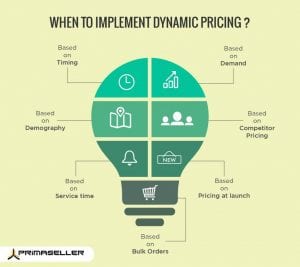
Dynamic Pricing Definition
A technical dynamic pricing definition is a dynamic pricing model example which updates prices regularly according to changing supply or demand characteristics. For example, a seller may adjust their prices up and down quickly so that they can charge the same customers different prices for similar products or services to either utilise capacity or maximise yield from growing demand.
Strategic dynamic pricing is a pricing strategy that companies choose over a fixed or static pricing strategy. We would estimate that about 50% of businesses in Australia now use some form of dynamic pricing model example to improve overall price decision-making capability.
We find that businesses that effectively implement dynamic pricing models consistently generate at least 1.5 – 3 percentage points of additional EBIT per year.
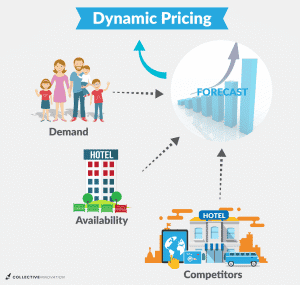
B2C Dynamic Pricing Model Example
Some of the common examples of B2C using dynamic pricing models are Easy Jet and Qantas. Both of these airlines have committed pricing and revenue management function to regulate prices daily. The main job of the pricing and revenue management team is to lead, control and refine a modern revenue management system to maximise revenue and individual flights.
For several years, Easy Jet dynamic pricing model was setting prices on a very granular level mostly for individual customers. Easy Jet’s dynamic pricing model enables the pricing team to optimise or adjust prices according to certain rules such as customer segmentation at any time and or amount of time until departure for any customer segment.
Dynamic pricing hotels and other capability-constrained service producers like Telcos have long used dynamic pricing models to balance capacity utilisation as well. Airlines use dynamic pricing to manage its time-based inventory (i.e., seats on flights). Utilities businesses use time-related dynamic pricing model examples to motivate their customers to purchase during off-peak hours and to keep track of capacity, supply and demand.
B2B Businesses Increasingly Use Dynamic Pricing Model Example
Typically, B2B industries that use a dynamic pricing example include: Energy, Fuels, commodities, Grain, Agricultural, Chemicals, Freight, Transportation.
These companies use dynamic for the following reasons:
- The value of the product varies in different market segments (commodities market/trading)
- The product may be perishable or product waste occurs
- Demand has seasonal and other peaks
- The product is sold both in bulk and on the spot market
Normally, B2B businesses use a dynamic pricing model example to stabilise capacity utilisation and demand. Not a lot of B2B businesses have discovered how to employ dynamic pricing to optimise margin in the spot pricing market or to different customer groups.
We have observed that some of the B2B companies in Australia are reevaluating their method of pricing dynamically. Most especially in the energy, transportation and freight markets. Their goal is to create more value for the business and its consumers by recognising their customer segments.
Major B2B companies in Australia are expanding their temporal pricing model based on supply, cost, capacity, and trading. Currently, they are in the process of discovering how to serve different customer segments with a fixed asset to improve profits by setting different prices for each segment.
B2B Pricing Transformation In Australia
A handful of B2B pricing organisations are now in full swing of continuous improvement. We see AGL, Toll, DHL all re-designing and on-boarding different skills on their pricing teams. All these businesses are committed to the process of systematically collecting and organising enough data on deals to pursue dynamic pricing.
Even now, few of them, have the transactional, real-time pricing or behavioural data required. They are a bit behind major retailers, airlines, and other companies that make millions of sales a year. But B2B commercial leaders are tapping into internal and external databases and other online sources to understand target segments, competitors, price boundaries, and the details of previous deals.
With new data in hand, leading B2B companies in Australia are using advanced analytics to manage growing complexity and act more quickly in today’s more competitive marketplaces.
Hoyts’ Dynamic Pricing Model Example
Did you know that Hoyts (owned by the Wanda Group) have even introduced a dynamic pricing model example in Australia?
Yes, even a physical cinema is using dynamic ticket pricing. A trend that is expected to be introduced in our supermarkets. (Look out for a dynamic pricing model example being trialled in Coles and Woolworths stores. Probably in affluent areas first, like Neutral Bay, Crows Nest, Double Bay.)
Here’s how…
A couple of years ago, Hoyts introduced electronic shelf labels, or ESLs to trial a dynamic pricing model example in Hoyts Chatswood (i.e, dynamic ticket pricing).
Hoyts Chatswood uses ESL displays like this: They display the price of the movie tickets behind the counter to reduce the need for paper tickets and to track demand or capacity levels. Prices on the screen can be changed easily and frequently. ELTs enable dynamic ticket pricing in physical stores and cinemas. Hoyts also use ELTs for their food and drinks sales as well (we will discuss this later in the article).
Hoyts Chatswood initially encouraged people to buy movie tickets online and by only offering discounts online. They also charge people significantly higher prices for tickets when they turn up at the counter asking for last-minute tickets (i.e., like the airlines dynamic pricing model and the hotels dynamic pricing model).

Getting stung with a hefty price at the counter educates people quickly to different buying behaviours.
People soon learned that going online was a far cheaper way of buying movie tickets at Chatswood Hoyts. In no time at all, people stopped turning up at the door expecting to buy tickets. They had changed the habit of a lifetime (some old habits do die quickly with the right price point).
Once Hoyts got people buying tickets online, they then had visibility on demand. This helps the pricing team to forecast future demand and balance capacity. The accountants were then able to manage and forward project cash-flows. Essential in a declining industry like cinemas.
Capacity is now a much bigger issue for Hoyts than ever before.
Hoyts obviously made an executive decision to remove a large proportion of seats from Hoyts Chatswood cinemas and replace them with reclining seats.
They changed to reclining seats to delight their customers with extreme comfort. But they also bought recliners for Hoyts Chatswood because they wanted to differentiate themselves from other cinemas.
They were right. People do love their reclining seats, especially the kids. Most cinemas have the older, up-right seats. The older ones, they are uncomfortable. Limited value proposition.
However, having fewer seats could have seriously risked Hoyt’s hard-earned volumes and potentially their revenue. They are expensive and massively reduce the number of seats in each cinema by at least half.
Interestingly, the price trials showed a different story on capacity utilisation.
Hoyts certainly didn’t want less volume and revenue by changing the seats. Especially as they are accelerating efforts to transform in a declining industry. So, what they did was gradually increase prices over time using a dynamic pricing model.
The impact of Hoyts’ dynamic pricing model has been quite subtle until fairly recently.
They have been adjusting prices in small increments and tactically discounting over the past 2 years or so to flip between pushing more volumes or generating more margin per seat.
Electronic pricing labels have been a great way for Hoyts to make more profitable sales overall too. They have introduced an electronic menu behind the popcorn counter with no prices. No pricing means no one knows or understands the price of the food and drink they are selling on the day. Even the staff don’t seem to know the real price of popcorn in the cinema.
The amazing result of the price trial, however, was that customers didn’t know the prices and still bought food and drink.
People knew it was expensive. They had a feeling it was not the same as before. However, they were still willing to buy food and drink without knowing the price. Inelastic demand for all food and drink, not just popcorn. A pure profit play.
Why were some people still buying food? The risk drivers of not buying the food were too powerful. Possibly screaming kids that want sweets and ice cream now. Parents that can’t say no. A couple that sees the Hoyts cinema Chatswood experience as a special occasion. Or teenagers that have been given spending money and don’t really understand the value of money.
But are reclining seats really enough to justify Hoyts’ extremely high prices across the board?

Hoyts introduced dynamic pricing at the same time they introduced their reclining seats. They probably introduced the two together to give people the sense they were getting tangible value for their money. Luxury, comfort, an experience like the theatre.
First, other cinemas can copy this idea and buy recliners too. Many don’t because it’s a big CAPEX investment (which is why Hoyts are probably not introducing recliners in their other cinemas). And, when you compare movie prices to a couple of years ago, you’ll be staggered to find that movie prices for a family at Hoyts Chatswood is now circa $80 – $90. Two years ago, a family ticket was circa $50. That’s a 60% price increase.
Hoyts have also completely phased out discounts for kids and families. The price changes daily for tickets and frequently for food and drinks. The total cost of $80 doesn’t include drinks or popcorn either. A day out in the cinema is now an expensive past time, which could be up to $150 for a family if they buy tickets, popcorn, drinks and sweets on the premise.
Ironically, cinemas were designed to entertain the masses on a cheap day out. Now it’s designed to entertain a small micro-segment who are happy to pay a large sum of money without knowing the prices of anything.
The Difference Between Static And Dynamic Pricing
Over the last three years, we have worked with a number of companies in Australia to set up advanced pricing and revenue management functions. We have also helped businesses set up pricing functions transitioning from static pricing to dynamic pricing capability (i.e., with data extracted from ERP systems, data/information hubs and or internet purchasing data.). See blog on pricing tools software.
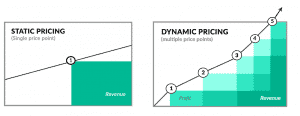
If you are not sure of the difference, here’s a brief explanation of static or fixed pricing and dynamic pricing models:
Static pricing is a single price point. It can also be a fixed-charge pricing model. Fixed-charge pricing gives customers open access to a product who pay a single price, such as paying one price for a magazine subscription or all you can eat buffet.
The benefit of static pricing used within a fixed-charge pricing model is that customers who make more use of the product or offer, pay a lower per-portion or per-use price than customers who make one-off purchases.
Static pricing can also include two-part pricing.
Two-part pricing includes both a fixed charge and a per-unit charge, such as paying a fixed amount to rent a car plus an additional amount for each mile driven. The two prices are often set so that customers who buy more units of a product pay less per unit than those who buy fewer units.
Costco is a good example of a static, two-part pricing model. They make a customer pay a fixed member fee upfront. The more items a customer purchases, the lower the per-item amount of the membership fee.
Static pricing is based on 3 important factors:
- how a customer perceives the product’s value
- its costs
- and customer price sensitivity
These factors all contribute to the profitability of giving lower per-unit prices to a customer who purchases larger product quantities or volumes.
The Advantages Of Static Pricing (Fixed Pricing)
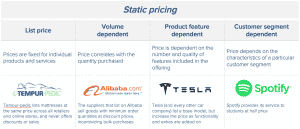
Fixed pricing is consistent. Customers get used to your pricing. Companies that use fixed pricing tend to change their prices annually or bi-annually. This means fixed pricing, in turn, may not offend as many customers by fluctuating prices over time.
Sales forecasting and profit estimates are also simpler when you know your price point.
The Disadvantages Of Static Pricing (Fixed Pricing)
Static pricing doesn’t allow for adjustments if you get into product or service delivery and the cost-to-serve is eating away at your margins.
It is easy to undercharge a customer (especially for professional services) if additional (unforeseen) work hours have to be completed to get the job done.
There is still a risk of customer switching or feeling ripped off using fixed pricing. Especially when you have set the price floor on your fixed and variable costs. This is because you have a higher chance of overcharging and underselling your offer using a simple cost-plus or mark up on cost pricing methodology.
Dynamic Pricing Advantages And Disadvantages
Dynamic pricing as previously discussed in the Hoyts’ dynamic pricing model example, means you can change the price of an item in real-time and over time. You can also react to the demand from customers at a very granular level. With the right strategy, pricing structure and revenue management system in place, it is possible to change prices in response to your competitors across micro-segments (i.e., competitor groups).
Dynamic Pricing Advantages
Advanced pricing tools and dynamic pricing models increase the quality of price decision making. It protects your hard-earned volumes and margins.
A dynamic pricing model example helps a pricing team develop reliable elasticity estimates. Thus, allowing to maximise profits with each customer.
An effective dynamic pricing model example is one which gives you the ability to adjust prices for services and products based on time, costs and consumer demand.
Another benefit of a dynamic pricing model example is that it gives you the ability to adjust prices for service and products based on the time and costs involved or fluctuating demand. In particular, a dynamic pricing strategy optimises revenue across multiple segments for perishable or time-based products and services.
For example, when sales fall for products with a life span (i.e., perishable goods), effective dynamic pricing model examples enable businesses to quickly lower their prices. When demand increases, conversely, a dynamic pricing model example enables businesses to increase prices again as demand increases.
A dynamic pricing model can also help a supplier serve multiple customer segments with a fixed asset. Namely, setting different prices for each segment to optimise revenue and enhance profitability.
Disadvantages Of Dynamic Pricing
Price transparency in the market. If customers realise they paid higher prices than others for the same solution, they may demand their money back or spread negative messages in the marketplace. (But not always, as the Hoyts’ case example.)
Some customers might not buy from you if they prefer to know the set price upfront on a purchase. Segmentation is critical for dynamic pricing to work well.
You need to enable the whole organisation to use sophisticated pricing software and systems. This takes time and money. The results of dynamic pricing take time. Advanced technology programs take at least 18 months to 5 years to learn to optimise price adjustments across multiple segments (let alone micro-segments) over time.
A key role of the pricing and revenue management team, therefore, is to direct the revenue management system. They need to ensure the system is learning properly. They need to understand how customer segments behave, including how the micro-segments within each customer segment behave.
People drive effective pricing decision-making. Data, models and process make decision-making more efficient.
Advanced pricing tools are difficult to set up. An effective dynamic pricing model example must be implemented properly and consistently to safely generate more revenue and margin for your business.
It is difficult to integrate a dynamic pricing example in the business. There is a risk that it might not work. Especially if the model is misaligned to broader pricing and product strategies. Which means you can lose customers, volume and revenue when you first set up or roll out a dynamic pricing model example into the market.
The Role Of The Pricing Team
To prevent necessary margin leakage when you set up a new dynamic pricing model example, you must get the help of world-class pricing.
An effective pricing team always tests assumptions before building dynamic pricing models. This includes using formal hypothesis testing and value frameworks or models to isolate unique customer demand and value drivers by segment and micro-segment.
Once a pricing team understands how their customer segments behave, they then look for effective ways to balance dynamic pricing and value-based price segmentation.
This includes: building an effective and flexible price structure with parameters/barriers that prevent the business from pricing below-cost or floor price.
Examples of barriers in dynamic pricing models are:
- time
- location
- prestige
- inconvenience
- extra service
Barriers help pricing teams influence consumer behaviour. That is, by ensuring that the segment’s willing to pay more is not able to pay the lower price.
Advanced pricing tools and models facilitate more informed, efficient and profitable pricing decisions.
Pricing expertise drives effective pricing decision-making. Data, models and process make team decision-making more efficient. You still need a world-class pricing function and sales team to inform strategy and segmentation even if you have invested in new pricing tools and systems.
Implications
Given the importance and complexity of pricing decisions; you would think that companies are keen to invest heavily in the pricing function. Dynamically pricing requires you get a world-class pricing team on board. They need the skills and expertise; to prepare the price data architecture and analytics to run a dynamic pricing model example.
However, our research indicates that 7 out of 10 pricing teams are still struggling to monetise the differential value generated within each served segment. Mainly due to lack of sponsorship or leaving pricing strategy discussions to the end of the year.
The 3 out of 10 pricing teams that do successfully implement a dynamic pricing model example, consistently generate more revenue and margin. Our research shows that pricing teams that have developed and implemented effective dynamic pricing model examples tend to be better at monitoring their changing markets than pricing teams using static pricing and cost-based pricing structures. But these teams are almost always supported by the business.
〉〉〉 Get Your FREE Pricing Audit 〉〉〉
Conclusion: Benefits Of Dynamic Pricing
If you want a pricing strategy to beat the odds, you’ll need to seriously consider a dynamic pricing model example for your business.
A technical dynamic pricing definition would be a dynamic pricing model example which updates prices frequently based on changing supply or demand characteristics to balance throughput and capacity utilisation.
Some pretty common B2C dynamic pricing model examples, include Easy Jet dynamic pricing and Qantas dynamic pricing.
Pricing has to be seen as a crucial pillar for long term profitable growth.
Click here to access your free pdf guide on driving pricing strategy in your business.
For a comprehensive view and marketing research on integrating a high-performing capability team in your company,
Download a complimentary whitepaper on How to Maximise Margins with Price Trials.
Are you a business in need of help to align your pricing strategy, people and operations to deliver an immediate impact on profit?
If so, please call (+61) 2 9000 1115.
You can also email us at team@taylorwells.com.au if you have any further questions.
Make your pricing world-class!
Related Posts
Leave a Reply Cancel reply
Categories
- marketing strategy (26)
- Organisational Design (14)
- Podcast (114)
- Pricing Capability (87)
- Pricing Career Advice (10)
- Pricing Recruitment (19)
- Pricing Strategy (287)
- Pricing Team Skills (13)
- Pricing Teams & Culture (24)
- Pricing Transformation (47)
- Revenue Model (25)
- Sales Effectiveness (27)
- Talent Management (7)
- Technical Pricing Skills (35)



